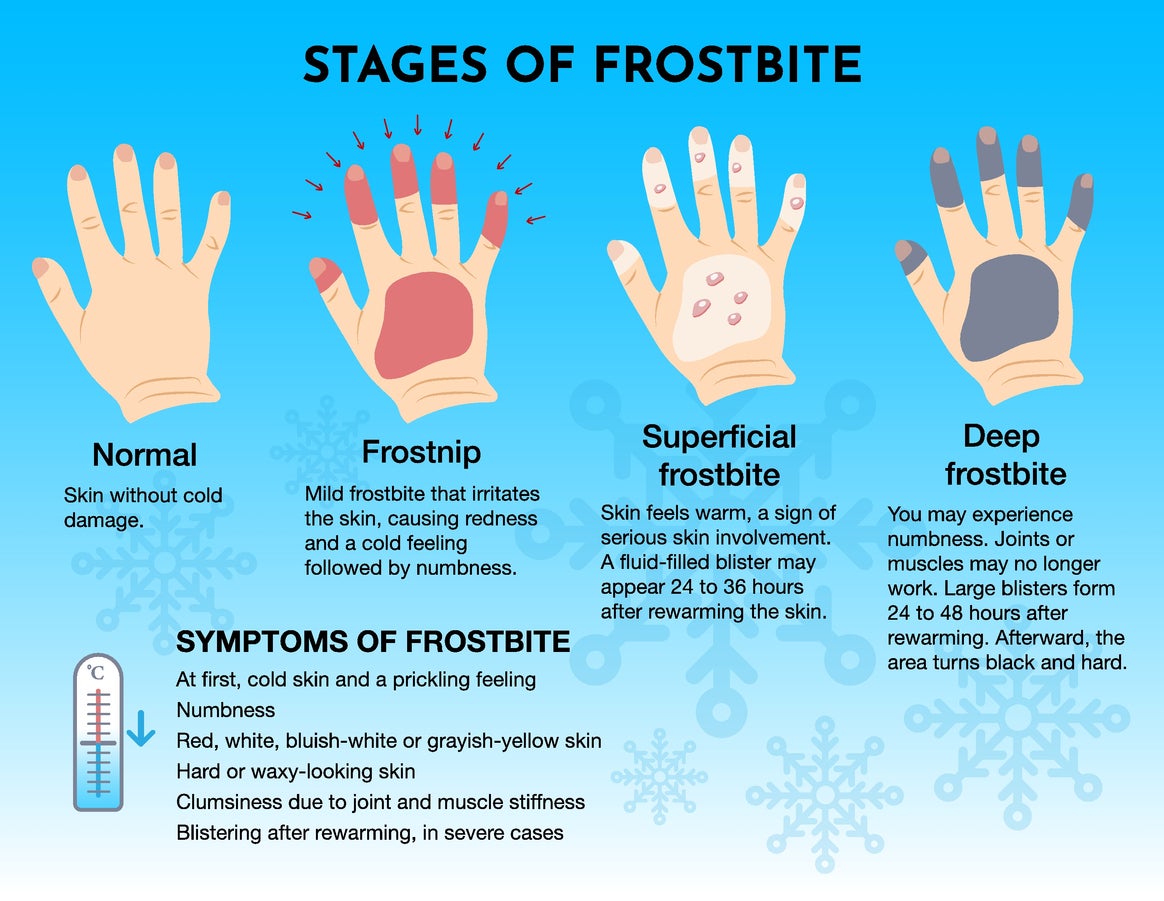How cold does it need to be to get frostbite and how fast does it occur?
How to avoid skin injury during extreme weather in the US this week

As chilly Arctic air takes over the eastern US during a “bomb cyclone“ over the coming days, bringing powerful winds snow and ice with it, residents will be at higher risk of frostbite.
Here's what to know about the skin injury caused by extremely low temperatures and how to avoid it:
What is frostbite?
Frostbite is when the skin and tissue freezes. It most commonly affects the most exposed parts of the body, including fingers and toes, plus the nose, ears, and face. It starts with numbness due to the cold and is often accompanied by a red colour on paler skin, followed by blisters and swelling. It can permanently damage limbs as blood flow is restricted from extremities in order to send it to the vital organs. The parts of the body with less blood will get colder and the moisture in the tissue can freeze into ice crystals.
When does it happen?
Wind chills of around -27°C (-17°F) or more can cause frostbite to occur quickly – in less than 30 minutes. However, it can occur at -0.55°C (31°F) over longer periods of time. You cannot get frostbite above freezing temperature degrees (0°C/32°F), but you can get still get hypothermia – which happens when your body temperature goes below 35°C (95°F) degrees.
How serious is it?
Frostbite can occur in several stages, from mild to very serious. Mild symptoms include numbness, reddish skin, mild pain and pins and needles – this is a warning sign you need to get somewhere warm. Blisters will appear in more serious superficial frostbite, and the skin may even feel warm.
Severe frostbite affects all layers of the skin and the tissue below. In severe cases, those affected by frostbite may not even know they have it – as they will stop feeling pain and stop feeling the cold temperature on the areas affected.
Those with lighter skin may notice a blue-grey colour. Extremities without blood flow may die and surgery may be needed to remove the dead tissue. Amputation of limbs may be needed if frostbite is severe.
How can I avoid getting it?
Keep sheltered and keep warm. If you do have to brave the elements, make sure you are dressed warmly with plenty of layers (including those on the most vulnerable areas – so balaclavas, thick gloves, warm waterproof boots etc) and don't spend prolonged periods of time in the cold. If you are stuck in the cold, keep moving to generate heat.
Older adults and babies are more at risk of frostbite, as are homeless people, hikers and hunters.
What do I do if I get frostbite?
Seek medical help immediately. Try not to touch, massage or itch your frostbite as it will remove the skin and could cause permanent damage. Do not walk on frostbite-affected feet.
Until help arrives, try to find a warm – not hot (no fires) – place. When there, remove all wet clothing and put warm clothes/blankets on. Do not place anything hot on frostbite, it needs to warm up gently. Warm water can help (bath of water at 37°C to 39°C (98.6°F to 102.2°F). The warming process can be painful – medical professionals will likely prescribe strong painkillers.
Subscribe to Independent Premium to bookmark this article
Want to bookmark your favourite articles and stories to read or reference later? Start your Independent Premium subscription today.

Join our commenting forum
Join thought-provoking conversations, follow other Independent readers and see their replies